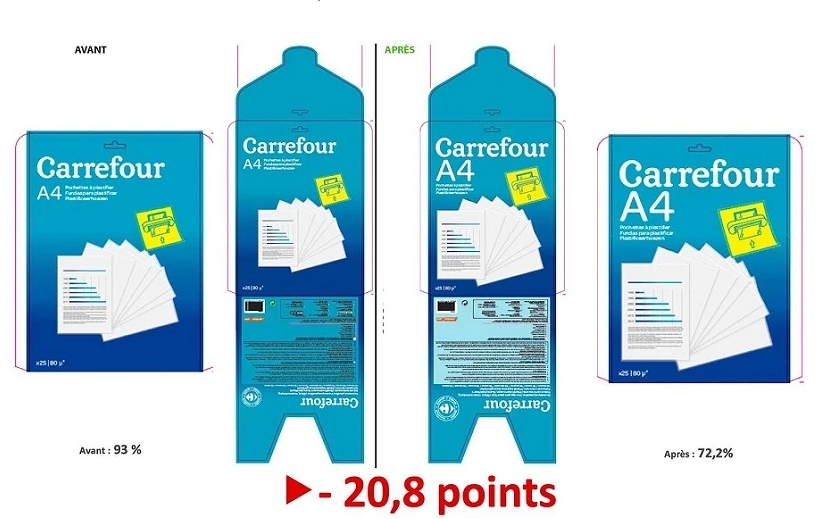Master the environmental impact of graphic creations
2024-05-25
The common factor of many graphic creations, especially in packaging design, is that they are often printed in large quantities to meet consumer demand. However, amid the focus on reducing packaging material consumption, one crucial aspect appears to have been overlooked: the environmental impact of printing inks. Often considered insignificant, the inks used in graphic creations play a more substantial role than we might imagine, both for their ecological implications and their economic considerations.

Understanding the composition of ink reveals its complex nature, consisting of several components. Pigments, or colorants, provide the vibrant hues that capture attention and differentiate brands. The carrier, or binder, acts as a carrier, allowing the ink to adhere effectively to various surfaces. In addition, adjuvants are used to improve the properties of the ink, guaranteeing fast drying times or greater resistance to wear.

Each graphic element, typographic character, shape and color carefully chosen to convey the desired message represents a specific amount of ink necessary for its reproduction. By adopting an environmentally friendly approach known as ‘eco-tinting’ (ink-saving process), designers can create the highest quality graphic designs while managing ink consumption during the printing process.
The best way to incorporate the eco-ink method is during the initial phases of design development, as an intermediate step based on a well-conceived graphic proposal. However, forward-thinking designers can also consider eco-inking as an integral part of the entire design process, including the conception of a brand’s graphic identity and guidelines.
The main objective of eco-ink – an ink saving process – is to optimize ink consumption without compromising the quality and visual impact of the creations. It aims to achieve a harmonious balance between resource efficiency and creativity. Although changes made to ink usage may not be immediately apparent to consumers or readers, successful eco-inking initiatives have demonstrated their potential to reinforce a brand’s environmental credibility and resonate positively with target audiences.
Furthermore, adopting an eco-design philosophy in the graphic arts goes beyond reducing ink consumption; encompasses a holistic approach to environmental management. By applying green practices in material selection and production processes, designers can significantly reduce the environmental footprint of their work.

In particular, eco-friendly ink also presents a compelling advantage when it comes to recycling. Graphic papers, widely used for packaging and marketing materials, undergo a deinking process during recycling to ensure the purity of the resulting paper. By minimizing the amounts of ink used in printing, eco-tinted papers facilitate the deinking process, reducing the consumption of chemicals and energy necessary to remove inks from recycled material. This, in turn, minimizes waste production and contributes to a more sustainable circular economy.
For brand owners looking to reduce costs, ‘green inking’ offers a potential source of savings. Using fewer inks has a direct impact on costs, and opting for CMYK – or even CMY – printing can offer extraordinary results at an even lower cost and with a reduced environmental impact.

The effectiveness of the eco-inking approach has been demonstrated by its practical application. Developed more than a decade ago, this innovative technique has been meticulously tested on more than 250 consumer product packaging in France. The results have been nothing short of remarkable, achieving an average reduction in ink consumption of between 20 and 25%, while preserving the visual appeal and message impact of the original creations.
As a passionate advocate for sustainability and ecological responsibility in design, I firmly believe in sharing knowledge and experience for the collective improvement of our environment. In this spirit, I have decided to disseminate the eco-inking technique as an ‘open source’ resource through comprehensive guides and training materials. I encourage designers, manufacturers and businesses to embrace eco-inking and unlock the potential for positive change in our creative industries. Come on in and, as you visit Drupa 2024 , don’t just assume that new substrates, new machinery and new technologies will help you reduce the environmental impact of packaging, but also consider new ways of designing and producing packaging.
In conclusion, adopting eco-inking is not only a means to improve the environmental sustainability of graphic creations, but also an opportunity for designers to establish themselves as pioneers of change in the ever-evolving landscape of design and consumer consciousness. . Together, we can make a significant contribution to safeguarding our planet’s resources and ensuring a greener, brighter future for generations to come.




